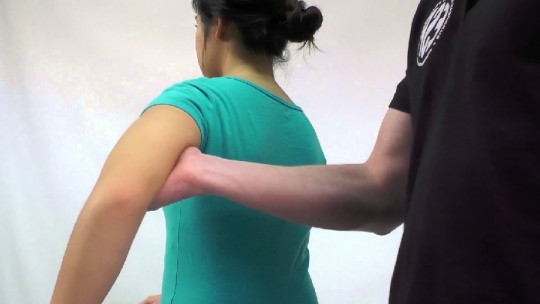The Ashworth scale is an instrument that measures the degree of spasticity or increased muscle tone , a problem that causes stiffness and a loss of balance between muscle contraction and relaxation in the patient. It is a scale that must be applied and completed by the professional, with the help of the patient.
In the article we explain what the Ashworth scale and its modified version consist of, what the items that make it up are, how it is applied and what its psychometric properties are.
What is the Ashworth scale?
The Ashworth Scale, also called the Ashworth Spasticity Scale, is a diagnostic instrument used to measure muscle tone and spasticity, that is, the ability of muscles to remain slightly contracted.
This scale was originally created by Ashworth in 1964 and later modified in 1989 by Bahannon and Smith on what is currently known as the modified Ashworth scale. This new version better measures muscle hypertonia.
This instrument consists of a subjective clinical assessment scale that allows muscle spasticity to be directly assessed, from no increase in muscle tone to extreme rigidity when flexing or extending the muscles.
The Ashworth scale was validated with neurological patients with different degrees of spasticity and has shown great interobserver reliability, both in the evaluation of elbow flexor spasticity and in the measurement of plantar flexor spasticity.
The modified scale adds items including the angle at which resistance appears, controlling the speed of passive movement with a count of 1 second. This improved version is easy to use and works for all joints (although it works best with the upper extremities). However, it still has points to improve, in the degree of discrimination (between degrees +1 and -1) or sensitivity.
Items and application of the scale
The modified Ashworth scale contains five main items, ranging from 0 to 4, including an additional item on scale 1.
Being a subjective assessment scale, the score depends on the personal appreciation of the health professional who applies it. It is important to know that this scale is heteroadministered, since neither the patient nor unqualified personnel is suitable for its application.
After observing the patient, the professional must assign values from 0 to 4, with the following meaning:
Psychometric properties
The psychometric properties of an instrument or rating scale include properties such as validity or reliability, aspects that take into account how effective and reliable an instrument is in evaluating what it claims to measure, or the degree to which each of the elements it They make it up and contribute to giving stability to the measure of each characteristic.
The modified Ashworth scale has several psychometric studies that have assessed its psychometric properties in order to test its effectiveness and reliability for measuring and evaluating spasticity and muscle hypertonia.
The main conclusions reached are the following:
Other tests that evaluate spasticity
Beyond the Ashworth scale, there are another series of tests capable of measuring spasticity. Some of the best known include:
1. Count clone keystrokes
In this test, the examining professional looks for the presence and amount of muscle contractions and relaxations (pulses) that make movements, above and below the ankle, wrist and other joints.
The scale is graduated from 0 to 3: 0 being the absence of pulses; 1, no sustained or few pulses; 2, sustained or continuous pulses; and 3, spontaneous or provoked by a light or sustained touch.
2. Tardieu Scale
The Tardieu scale is an instrument in which the evaluating professional moves the patient’s muscles at different speeds quickly and slowly, to observe if the resistance changes depending on the speed of movement.
The scale is graduated from 0 to 4 with 0, no resistance throughout the stretching course; 1, poor resistance at a specific angle throughout the course of the stretch, with unclear muscle engagement; 2, clear engagement at a specific angle, interrupting stretching, followed by relaxation; 3, clone appearing at a specific angle lasting less than 10 seconds while the tester maintains pressure; and 4, the same as the item, except for the duration, which must be greater than 10 seconds.
3. Penn Spasm Frequency Scale
This scale aims to report how frequently muscle spasms occur It is graded from 0 to 4 as follows: 0, no spasms; 1, spasms induced only by stimuli; 2, spasms occurring less than once every hour; 3, spasms occurring more than once every hour; and 4, spasms that occur more than 10 times every hour.









